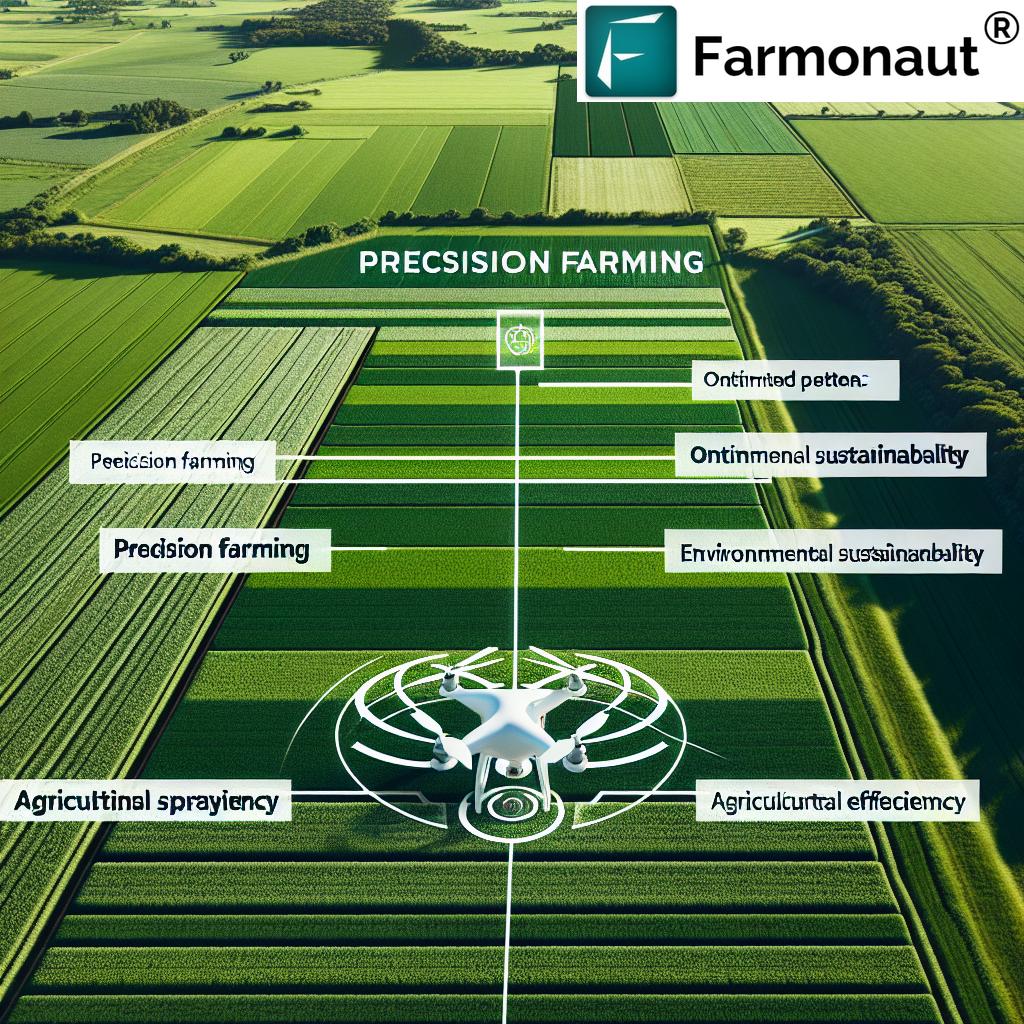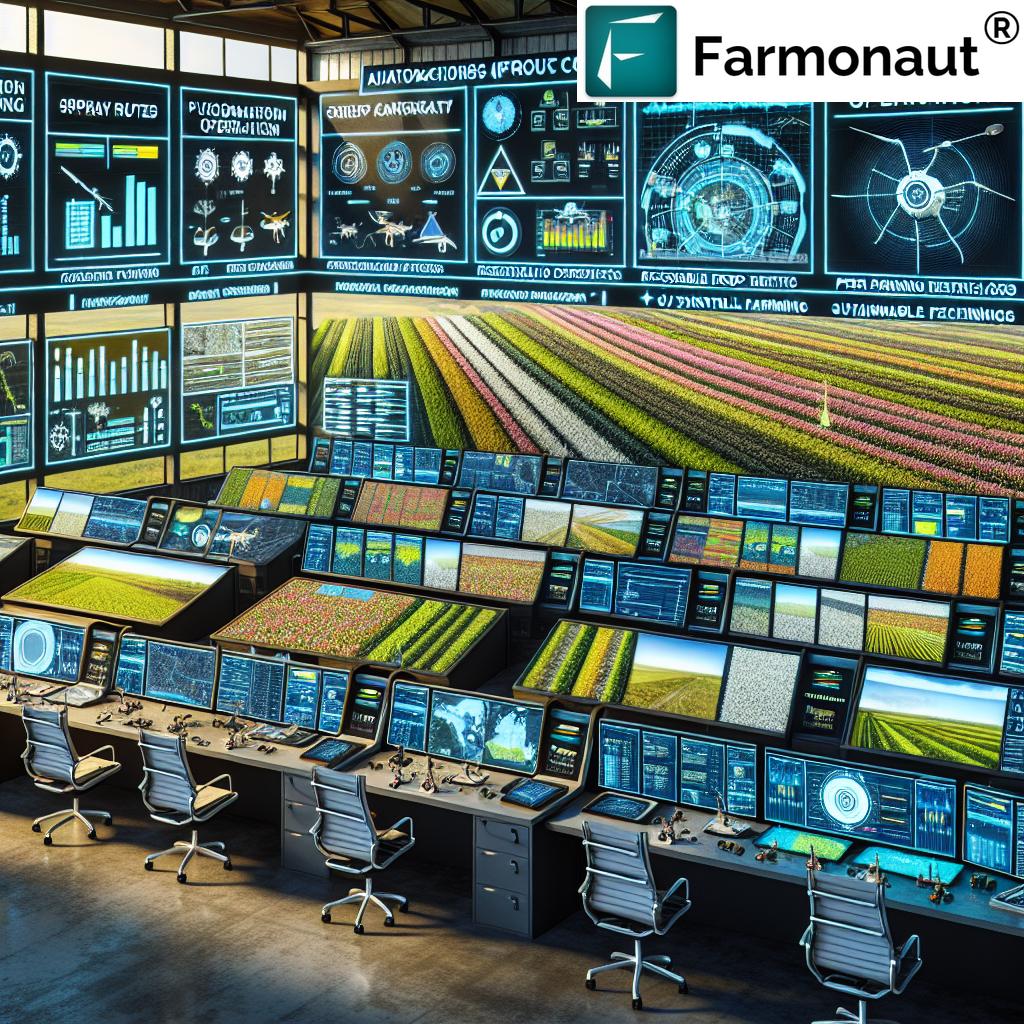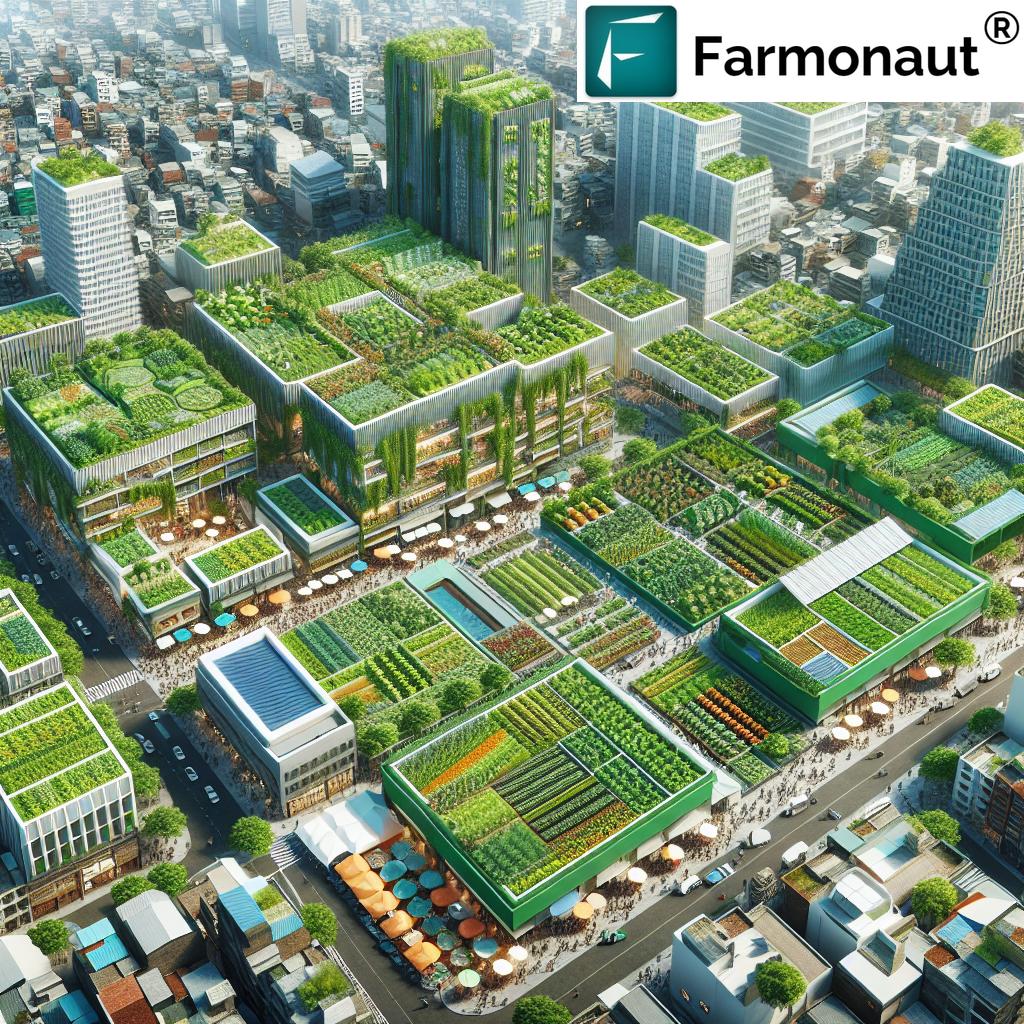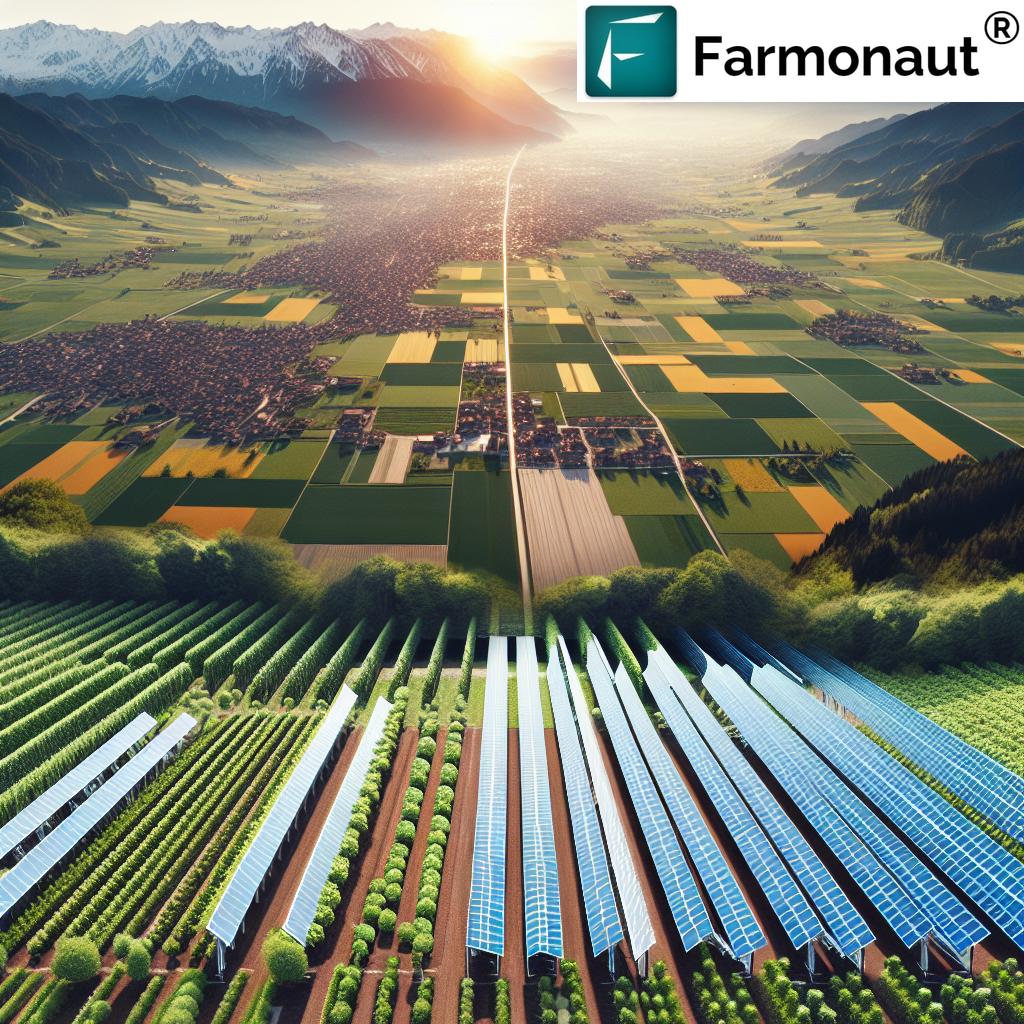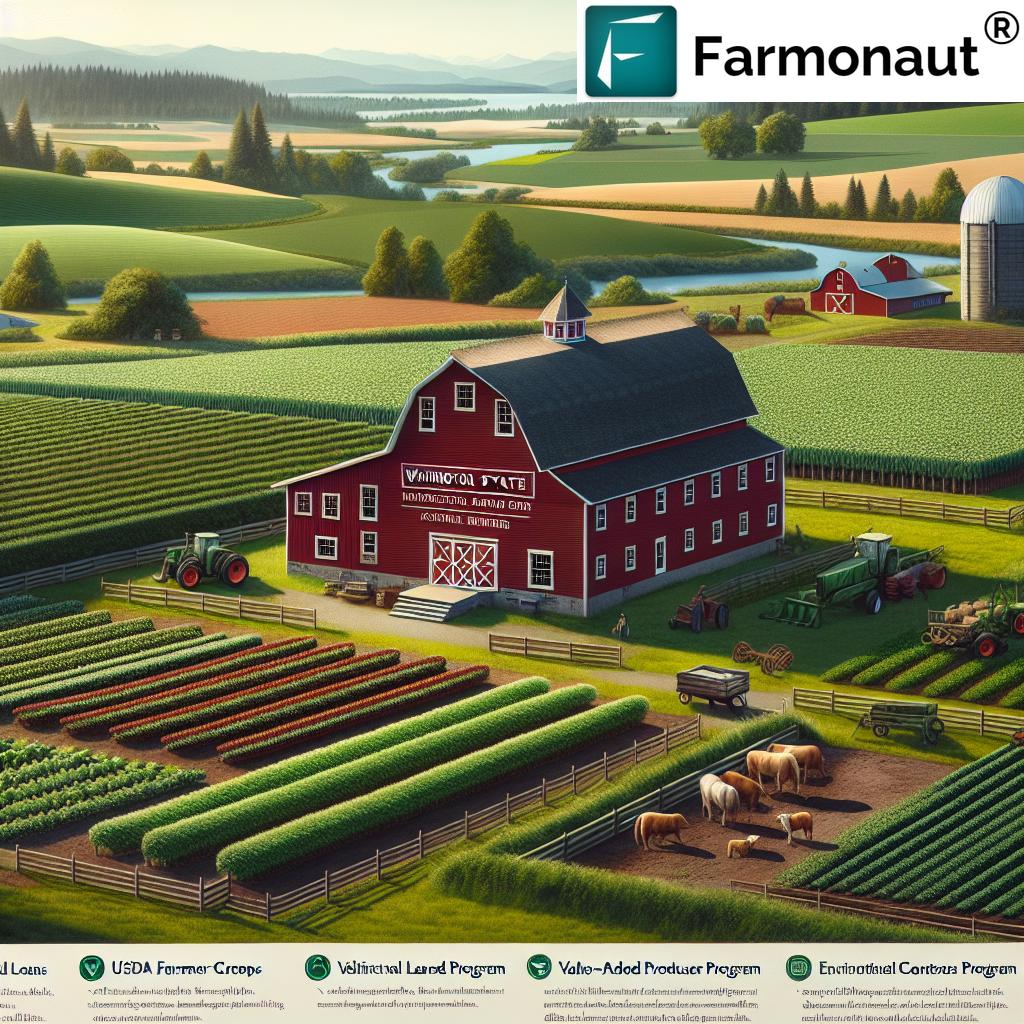Crop Spraying Drone Revolution: 7 Ways Boosting US Farms
Welcome to the era of drone spraying in agriculture, where technology, efficiency, and sustainability converge to create the most transformative shift in crop management we’ve seen in decades. The integration of crop-spraying drones, also known as UAVs in agriculture, is elevating how US farms address challenges, boost yields, and manage operations with unprecedented precision.
“Over 7,000 FAA-certified drone pilots operate in U.S. agriculture, transforming crop spraying practices nationwide.”
Evolution and Adoption of Crop-Spraying Drones
The journey of crop-spraying drones began more than a decade ago, first gaining remarkable momentum in China and now experiencing a rapid ascent in the United States. As farming practices evolve, so does the acceptance of advanced technologies—none more significant than drone-based aerial spraying.
The Global Rise: From China to the U.S.
When we examine the evolution of agricultural drone technology, it’s clear that the concept has been met with resounding success globally. In China, for instance, the adoption of multi-rotor spray drones started as early as 2009. By 2021, over 120,000 drones had covered an astonishing 175.5 million acres of farmland (ohioline.osu.edu). This remarkable scale underscores the efficiency and effectiveness of UAV deployment in large-scale agricultural spraying.
Here in the United States, the integration of drone spraying in agriculture is surging, albeit at a different pace and regulatory context. Innovative companies are pioneering large, autonomous eVTOL (electric vertical takeoff and landing) drones, which have received critical FAA approval—signaling a new phase for crop management and overcoming traditional labor shortages in the process (axios.com).
The rising adoption of drones is redefining farm operations on both large and small farms, offering more accessible, sustainable farming technology for all.
Technological Advancements: How Drones Are Changing Farm Operations
How exactly are drones—and especially precision farming drones—transforming US agriculture? It’s all about the fusion of modern technologies: smarter sensors, autonomous flight planning, real-time control, and modular construction for maximum field flexibility.
-
Autonomous Flight Planning:
Equipped with advanced GPS and RTK (Real-Time Kinematic) positioning, drones map out fields with centimeter-level accuracy. This ensures uniform spray coverage and minimizes chemical overlap or missed areas (msoen.com). -
Intelligent Spray Control:
Drones adjust spraying volumes on the fly, using flow sensors and electronic pressure regulators. This means chemicals are applied precisely in relation to vegetation density, saving costs and reducing environmental impact. -
Obstacle Avoidance:
Radar, LiDAR, and visual camera sensors scan for obstacles such as trees and power lines, ensuring drones can adaptively navigate complex field terrains. -
Modular Design:
With swappable tanks and batteries, down time is minimized for ongoing operations—even on large US farmland.
7 Ways Crop Spraying Drones Are Revolutionizing US Farms
Let’s break down the seven most significant benefits of integrating drone spraying technology into modern farming practices across the United States:
-
Unmatched Efficiency in Spray Operations
Drones can cover 5–20 hectares per hour, drastically outpacing manual labor and even traditional ground-based machinery. For extensive US farmland, this means more timely and consistent field treatments. -
Precision Ag: Optimizing Chemical Usage
Targeted aerial application reduces input waste. Drones with variable rate technology adjust spray volumes in real-time, so resources are deployed exactly where and when they’re needed—with up to 30% less chemical use. -
Reduced Labor and Lower Operational Risk
A single operator can manage multiple UAVs, decreasing workforce demand and minimizing exposure to hazardous pesticides. -
Accessibility in Challenging Terrain
Difficult-to-access areas—wet rice fields, steep hills, vineyards, and tall orchards—are easily reached by drones, where tractors or human crews would struggle or cause crop damage. -
Promoting Environmental Sustainability
By applying chemicals only where needed, crop spraying drones reduce chemical runoff into soil and water, supporting eco-friendly and sustainable farming initiatives. -
Data-Driven Crop Management
Integration with platforms like Farmonaut allows aerial data to be combined with carbon footprinting tools and product traceability solutions, enhancing transparency and sustainability metrics across operations. -
Supporting Regulatory Compliance
Advanced drones are built with features that help operators comply with federal and state aerial spraying regulations—making audits and reporting more straightforward.
Comparative Benefits Table: Drone Spraying vs. Traditional Methods
How do drone spraying in agriculture and manual/traditional spraying stack up? Here’s a clear, data-backed comparison to illustrate the transformative benefits:
| Feature / Aspect | Traditional Spraying | Drone Spraying |
|---|---|---|
| Spray Coverage Accuracy | 70–80% (manual overlap/gaps possible) |
95–99% (GPS/RTK controlled) |
| Labor Requirement | 4–6 workers/100 acres | 1 pilot/300+ acres |
| Chemical Use Reduction | Baseline—no savings | Up to 30% less |
| Time Efficiency | 10–15 acres/hour | 20–40 acres/hour |
| Environmental Impact | Potential high runoff; soil compaction | Minimal runoff; no soil disruption |
| Cost per Acre (Estimate) | $8–$15 | $5–$10 (improves with scale) |

Farmonaut API: Integrate live satellite and weather data into your own agricultural management system.
“UAV crop spraying can cover up to 40 acres per hour, revolutionizing large-scale farm management.”
Applications of Drone Spraying in Agriculture
- Paddy Fields: Drones efficiently spray agrochemicals on submerged crops without causing soil compaction or crop damage.
- Vineyards: Navigating tight rows and uneven terrain, precision farming drones minimize crop contact and boost efficiency.
- Orchards: High-reaching UAVs in agriculture deliver targeted applications to canopy tops, ensuring coverage for tall fruit trees.
- Large-Scale Farms: Drones with modular tanks cover vast acreage quickly, supporting commercial adoption and large-scale farm management.
- Weed and Pest Control: UAVs target localized infestations for rapid, site-specific treatment—reducing overall chemical usage.
- Fertilizer Distribution: Foliar feeding is delivered uniformly across growth stages—optimizing nutrient delivery for maximum yield.
Challenges and Considerations in Drone-Based Spray Operations
While the benefits of drone spraying technology are compelling, certain challenges remain on the road to mainstream adoption:
-
Battery Limitations:
Most drones last 10–30 minutes per charge; battery swaps are necessary for large field operations. -
Weather Dependency:
Operations can be delayed by wind, rain, and fog, impacting scheduling. -
Regulatory Barriers:
FAA drone regulations for agriculture require certified pilots, UAV registration, and sometimes special permits for spraying operations. -
Initial Investment:
Cost of the drone, related equipment, and training can be significant—though ROI typically improves over several growing seasons.
**Ready to optimize resource use? Discover Farmonaut Fleet Management solutions to efficiently track farm vehicles for safer, more cost-effective deployment.**
FAA Drone Regulations for Agriculture: Navigating the Regulatory Landscape
For US operators, compliance with Federal Aviation Administration (FAA) regulations is essential. Here’s what we need to know about the regulatory landscape for drone spraying in agriculture:
- Part 107 & Part 137 Rules: Commercial spraying most often requires both a Part 107 Remote Pilot Certificate (for basic UAV operation) and an exemption under Part 137—especially for drones over 55 pounds.
- Spraying Permits: Additional local or state permits may be necessary, depending on the target crop and chemicals used.
- Pilot Certification: Certified training ensures safe, effective operations and reduces risks for both operators and insurance providers.
Staying current with FAA drone regulations for agriculture helps us avoid costly penalties and supports the reputation of professional UAV operations.
Farmonaut: Powering Precision Farming With Cutting-Edge Solutions
At Farmonaut, we have committed ourselves to democratizing precision agriculture—making data-driven, technology-enhanced farming both accessible and affordable for every US grower and global producer.
-
Satellite-Based Crop Health Monitoring:
We deliver actionable insights on vegetation (NDVI), soil moisture, irrigation requirements, and pest risks—using multispectral satellite images. Our platform empowers farmers to optimize fertilizer, pesticide, and agrochemical usage, ultimately boosting yields and maximizing efficiency.Explore this advanced feature—calculate and monitor your carbon emissions with Farmonaut Carbon Footprinting—and join the movement toward sustainable farm management.
-
Jeevn AI Advisory System:
Real-time, personalized farm recommendations leverage satellite data and weather forecasts to help US growers make smarter decisions across each stage of the crop cycle. -
Blockchain-Based Product Traceability:
With our traceability solutions, every step from field to shelf is secure and transparent, increasing consumer trust and supporting food brands. -
Fleet & Resource Management:
Agribusinesses tracking fleets of UAVs and ground vehicles can use Farmonaut’s Resource Solutions to reduce costs, ensure safety, and achieve higher efficiency in deployment. -
Carbon Footprinting:
Our carbon management dashboard helps businesses take measurable action toward eco-friendly farming—complying with evolving US and global sustainability requirements. -
Affordable & Scalable Access:
Farmonaut operates on a flexible subscription model, making it suitable for small farms, large agribusiness, and government entities. API access (see below!) means seamless integration into proprietary or existing management platforms.
Discover how our satellite-based crop loan and insurance verification can help you improve documentation, access better financing, and reduce fraud risk in farm lending.
Whether you’re optimizing irrigation, protecting fields, or planning for the next planting season, Farmonaut’s tools and advisory are designed for every segment of the agricultural value chain.
The Future Outlook: Drones, AI, and Sustainable Farming Technology
What does the future of drone spraying in agriculture look like? We anticipate a fully hybrid future—where autonomous drones, satellite analytics, soil sensors, and AI-driven platforms work together, orchestrating precision farming at scale.
- Enhanced Drone Capabilities: As battery life extends and sensors become more accurate, UAVs in agriculture will handle not just spraying but real-time scouting and multi-spectral imaging for each stage of crop growth.
- Integrated Farm Management: Drones will work in synergy with cloud farm management systems, like Farmonaut’s, allowing growers to plan, monitor, and report field activities from mobile or web apps.
- Widespread Subsidies and Support: US government agencies and agricultural departments are ramping up financial support, pilot training, and technical assistance to speed the adoption of sustainable farming technology.
- Sustainability & Compliance: Carbon tracking and product traceability features, combined with aerial drone spraying, position US farms to meet future environmental regulations and consumer demands.
As the regulatory landscape, FAA approvals, and drone pilot training programs continue to evolve, we’ll see US farms reap the rewards of increased efficiency, reduced costs, and greater environmental stewardship through the ongoing integration of crop spraying drones.
For producers seeking to manage large, multi-site operations effectively, the Farmonaut Agro Admin App for Large-Scale Farm Management simplifies field mapping, team coordination, and resource allocation.
Frequently Asked Questions (FAQ)
What is drone spraying in agriculture?
Drone spraying in agriculture refers to the use of unmanned aerial vehicles (UAVs) equipped with tanks and nozzles to apply pesticides, fertilizers, or other agrochemicals over crops. This technology increases operational efficiency, reduces chemical usage, and enables precision targeting.
How do I comply with FAA drone regulations for agriculture?
For commercial operations, FAA regulations require a Part 107 Remote Pilot Certificate, UAV registration, and sometimes a Part 137 exemption for drones weighing over 55 pounds. You may also need a state or local aerial spraying permit. Always check the latest FAA and state-level policies.
Can crop spraying drones replace traditional tractors or ground sprayers?
While drones are superior for small to medium-scale spraying, uneven terrain, and precise spot treatments, large fields might require a hybrid approach using both drone and ground-based solutions for maximum efficiency.
Are there environmental benefits to using drones for crop spraying?
Absolutely. Drones minimize chemical runoff by targeting only required areas, reduce soil compaction, and prevent unnecessary pesticide exposure—making them key to eco-friendly and sustainable farm practices.
What makes Farmonaut’s technology unique?
Unlike hardware-dependent solutions, Farmonaut offers affordable precision agriculture through satellite-based data, AI advisory, blockchain traceability, and carbon footprinting, available via app, browser, or API—making cutting-edge technology accessible to all farmers.
Can I access Farmonaut’s services on my phone?
Yes! Download the Android app or iOS app, or access via web to get real-time crop health analytics and farm management tools anytime.
How does drone spraying help with compliance and reporting?
Modern drones track flight paths, application rates, and field data automatically. These records help ensure you are always audit-ready for regulatory or sustainability certifications.
Is drone spraying cost-effective for small farms?
Yes, especially when leveraged through service providers. Farmonaut’s scalable subscription model and accessible data support small farm efficiency—without heavy capital investment in specialized machinery.
Farmonaut Subscription Plans
Want to experience precision agriculture like never before? Choose a Farmonaut subscription plan tailored to your acreage and data needs—scalable, affordable, and designed for results.
As US agriculture faces rising demands for efficiency, sustainability, and regulatory compliance, the crop spraying drone revolution is leading the way. By harnessing drones for crop management and integrating Farmonaut’s data-driven solutions, we are not just farming—we are shaping the future of food, farming, and our planet. Ready to take flight?
Explore more:
- Advanced carbon footprinting for sustainable farms
- Seamless fleet management for your farm vehicles and UAVs
- Blockchain product traceability for trusted supply chains
- API access for on-demand satellite and weather insights

